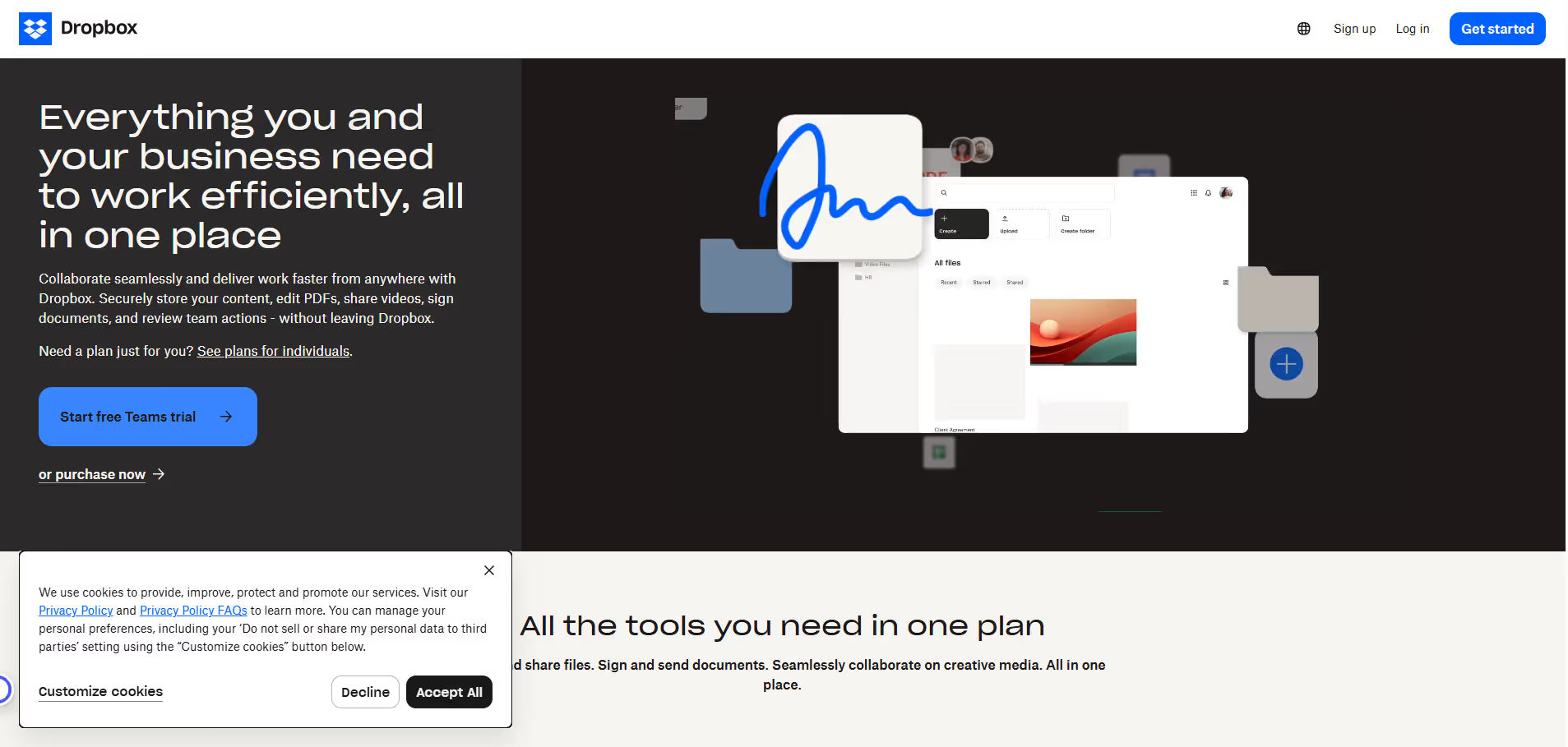Tool Insights
Home > Tools > Tool Details
Dropbox
Description
Dropbox is a leading cloud storage service offering seamless file synchronization, sharing, and secure backup solutions across multiple devices for individuals and teams.
Dropbox provides a robust cloud-based platform for storing, sharing, and collaborating on files and folders from any device, anywhere. It features automatic file synchronization, version history for easy recovery, and secure sharing options, making it an essential tool for personal use, creative professionals, and business teams. Its intuitive interface and reliable performance ensure that documents, photos, and videos are always accessible and up-to-date.
Key Applications
- File Storage: Securely storing and organizing personal and professional documents, media, and projects in the cloud.
- File Sharing & Collaboration: Sharing files and folders with others, enabling real-time collaboration with version control.
- Device Synchronization: Automatically syncing files and folders across desktops, laptops, and mobile devices.
- Data Backup & Recovery: Providing a reliable backup solution with file version history and easy restoration of deleted items.
Who It’s For
Individuals, freelancers, small to large businesses, and creative professionals who require secure, accessible, and collaborative cloud storage and file management capabilities.
Pros & Cons
How It Compares
- Versus Google Drive: Dropbox often offers a simpler, more intuitive desktop sync experience and strong third-party integrations, while Google Drive provides deeper integration with Google Workspace and a more generous free storage tier.
- Versus OneDrive: Dropbox generally excels in cross-platform compatibility and dedicated file synchronization performance. OneDrive is tightly integrated within the Microsoft 365 and Windows ecosystems, offering value for users committed to Microsoft products. Versus Box: Dropbox is typically favored for general-purpose file syncing and individual or small team collaboration. Box focuses more on enterprise content management, advanced security, and workflow automation features.
Bullet Point Features
- Cloud storage and file synchronization
- Secure file sharing and collaboration tools
- Automatic file backup and version history Cross-device access (desktop, web, mobile)
- Offline access to files and folders Selective sync to save local storage space
- Document scanning functionality Integrations with popular third-party applications (e.g., Microsoft Office, Zoom, Slack)
- Advanced security features (e.g., two-factor authentication, encryption)
Disclosure
All product names, logos and brands are property of their respective owners. Use is for educational and informational purposes only and does not imply endorsement. Links are to third-party sites not affiliated with Barndoor AI. Please see our Terms & Conditions for additional information.



.avif)




